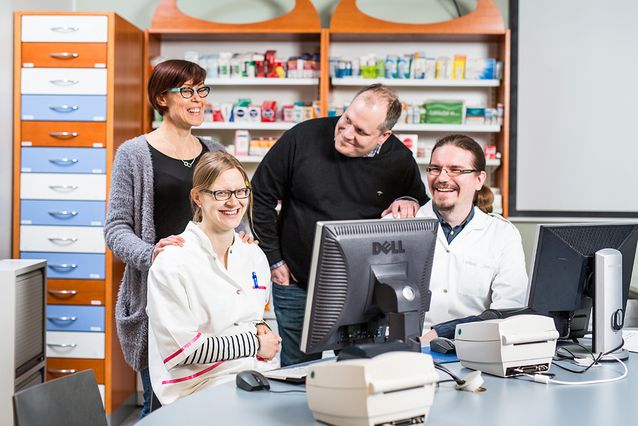Metabold wants to improve the quality of life of the elderly. With an analytics method called metabolic profiling, the team can find out the health status of a senior citizen and how it can be improved, says team leader Kati Hanhineva.
“Doctors commonly prescribe medication for the elderly without paying enough attention to their nutritional status, that is, whether or not they’re eating the right amounts and types of nutrients. Sometimes they’re prescribed several overlapping medicines, when the problem could be solved simply by altering their nutritional habits. Nutrition has a huge impact on an individual’s capacity to metabolize and to cope with medication.
We use metabolite profiling to get an inclusive image of a person's health status. Metabolite profiling is an analytical method that studies the biological fingerprints of cellular processes and provides a snapshot of the physiology of a cell. It can be done using any biological sample such as blood, urine or saliva. By studying the results we can not only find out what’s not working in a senior’s nutritional intake, but also if their medication isn’t aligned with it. The wrong combination of nutrition and medicine can, in the worst case, lead to serious adverse events. Sometimes the elderly don’t respond at all to the medicine they take, which means they take it for nothing.
Our team attacks a global problem. People live longer than before and if elderly care is straining the society economically now, it will do so even more in the future. Our research can reduce the need for medication and make elderly care more cost-efficient. And, obviously, add more healthy years and well-being to people’s lives.
The best case scenario is that in the future, we can use new diagnostic methods based on the results of our research when evaluating the patient’s need for treatment.
We are very curious and this competition is a great way for us to satisfy our need to know more. We also like to call ourselves bloodthirsty. This applies in two different ways. First, we are very enthusiastic, hungry even, to move forward with our research and create something new. Second, we actually do need blood to get these analyses done.”
1. Why can your team make the world a better and more sustainable place?
We have a unique combination of pharmaceutical, nutritional and geriatric know-how in our team and a wide network for commercializing the applications that we develop. We’re at the top with our knowledge in analytics and we possess world-class academic know-how in our fields.
2. If you could collaborate with anyone in the world, who would it be?
What we are missing are the skills to visualize vast amounts of data. We’d love to work with Manuel Lima, a Portuguese designer, who’s an expert in this area. He makes data visualization look like art – it pleases the eye and is easy to digest.
3. What’s the best thing that has come out of science and research so far?
I think it’s the big picture, the fact that we’re arriving at a deeper understanding of life all the time. Also, the current rapid development of different technologies that make it possible to observe big biological entities is essential.
Team members:
Kati Hanhineva, team leader, academy research fellow, University of Eastern Finland
Olli Kärkkäinen, post-doctoral researcher, University of Eastern Finland
Mikko Juuti, development manager, University of Eastern Finland
Juho Rousu, professor, Aalto University
Jussi Paananen, assistant professor, University of Eastern Finland
Sirpa Hartikainen, professor, University of Eastern Finland
Jenna Pekkinen, post-doctoral researcher, University of Eastern Finland
Celine Brouard, post-doctoral researcher, Aalto University
Eric Bach, PhD student, Aalto University
Huibin Shen, PhD student, Aalto University

